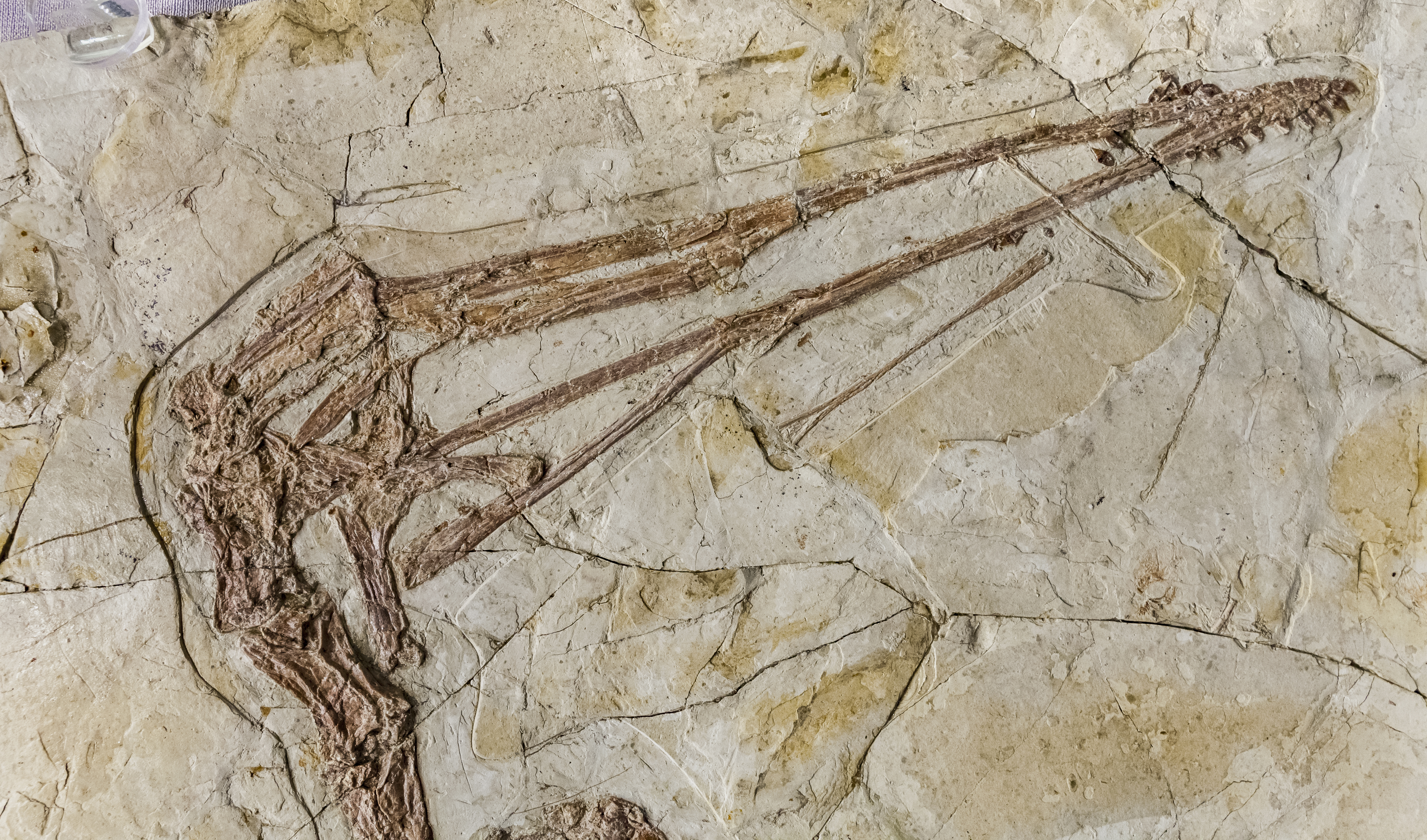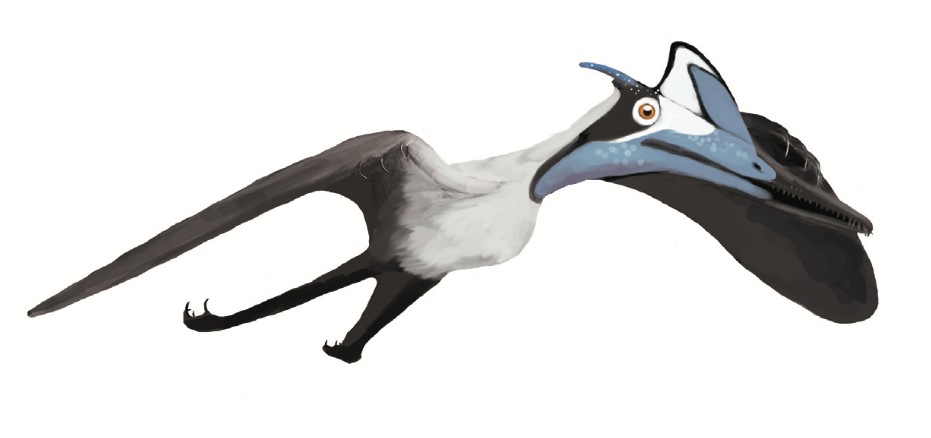|
Istiodactylidae
Istiodactylidae is a small Family (biology), family of pterosaurs. This family was named in 2001 after the type genus ''Istiodactylus'' was discovered not to be a member of the genus ''Ornithodesmus''. Systematics and distribution Remains of taxa that can be confidently assigned to Istiodactylidae have been found in the UK and China, in rocks dating from the Early Cretaceous period (Barremian to Aptian stage). Victoria Arbour, Arbour and Currie (2011) described Canadian ''Gwawinapterus beardi'' as a member of Istiodactylidae living in the late Cretaceous (upper Campanian stage); however, Witton (2012) suggested the tooth replacement pattern in this animal does not match that of pterosaurs, suggesting that the species might be non-pterosaurian. Additional research suggested that the species was in fact a fish. The earliest known species might be ''Archaeoistiodactylus linglongtaensis'', from the Middle Jurassic of China; however, it also has been suggested that the holotype speci ... [...More Info...] [...Related Items...] OR: [Wikipedia] [Google] [Baidu] |
Istiodactylus Latidens
''Istiodactylus'' is a genus of pterosaur that lived during the Early Cretaceous period, about 120 million years ago. The first fossil was discovered on the English Isle of Wight in 1887, and in 1901 became the holotype specimen of a new species, ''O. latidens'' (Latin for "wide tooth"), in the genus ''Ornithodesmus''. This species was moved to its own genus, ''Istiodactylus'', in 2001; this name is Greek for "sail finger". More specimens were described in 1913, and ''Istiodactylus'' was the only pterosaur known from three-dimensionally preserved fossils for much of the 20th century. In 2006, a species from China, ''I. sinensis'', was assigned to ''Istiodactylus'', but it has also been suggested to belong to a different genus. ''Istiodactylus'' was a large pterosaur; estimates of its wingspan range from . Its skull was about long, and was relatively short and broad for a pterosaur. The front of the snout was low and blunt, and bore a semicircle of 48 teeth. The triangular teeth ... [...More Info...] [...Related Items...] OR: [Wikipedia] [Google] [Baidu] |
Nurhachius
''Nurhachius'' is a genus of Istiodactylidae, istiodactylid pterodactyloid pterosaur from the Barremian to Aptian-age Lower Cretaceous Jiufotang Formation of Chaoyang, Liaoning, Chaoyang, Liaoning, China. Its fossil remains date back about 120 million years ago. Discovery The genus was named in 2005 by Wang Xiaolin, Alexander Kellner, Zhou Zhonghe and Diogenes de Almeida Campos. The type species is ''Nurhachius ignaciobritoi''. The genus name refers to Nurhaci, the first List of emperors of the Qing dynasty, emperor of the Qing Dynasty, whose original power base encompassed the region where the fossil was found. The specific name (zoology), specific name honors the late Brazilian paleontologist Ignácio Aureliano Machado Brito, who pioneered the study of pterosaurs in his country. ''Nurhachius'' was first described based on its holotype fossil, Institute of Vertebrate Paleontology and Paleoanthropology, IVPP V-13288, a partial skull and skeleton. A second specimen, LPM 00023, wa ... [...More Info...] [...Related Items...] OR: [Wikipedia] [Google] [Baidu] |
Istiodactylid Skulls
Istiodactylidae is a small family of pterosaurs. This family was named in 2001 after the type genus ''Istiodactylus'' was discovered not to be a member of the genus '' Ornithodesmus''. Systematics and distribution Remains of taxa that can be confidently assigned to Istiodactylidae have been found in the UK and China, in rocks dating from the Early Cretaceous period (Barremian to Aptian stage). Arbour and Currie (2011) described Canadian '' Gwawinapterus beardi'' as a member of Istiodactylidae living in the late Cretaceous (upper Campanian stage); however, Witton (2012) suggested the tooth replacement pattern in this animal does not match that of pterosaurs, suggesting that the species might be non-pterosaurian. Additional research suggested that the species was in fact a fish. The earliest known species might be '' Archaeoistiodactylus linglongtaensis'', from the Middle Jurassic of China; however, it also has been suggested that the holotype specimen of this species might actual ... [...More Info...] [...Related Items...] OR: [Wikipedia] [Google] [Baidu] |
Liaoxipterus
''Liaoxipterus'' is a genus of pterodactyloid pterosaur from the Barremian-Aptian-age Lower Cretaceous Jiufotang Formation of Chaoyang, Liaoning, China. The type species is ''Liaoxipterus brachyognathus''. The genus name is derived from the discovery locality Liaoxi and a Latinised Greek ''pteron'', "wing". The specific name is derived from Greek ''brachys'', "short" and ''gnathos'', "jaw". Description The genus is based on holotype CAR-0018, an almost complete but crushed 161 millimetres long mandible (fused lower jaws), which differs from that of all known other ctenochasmatids in its short teeth and low tooth count (eleven per side). Also a detached hyoid is present.Dong, Z., and Lü, J. (2005). A New Ctenochasmatid Pterosaur from the Early Cretaceous of Liaoning Province. ''Acta Geologica Sinica'' 79(2):164-167. The jaw of ''Liaoxipterus'' had a rounded top filled with small, peg-like teeth. The shape of the teeth, and the anatomy of the ''hyoid'' (a bone that anchors the ... [...More Info...] [...Related Items...] OR: [Wikipedia] [Google] [Baidu] |
Hongshanopterus
''Hongshanopterus'' is a genus of pterodactyloid pterosaur from the Lower Cretaceous Jiufotang Formation of Liaoning, China. The type species ''Hongshanopterus lacustris'' was in 2008 named and described by Wang Xiaolin, Diogenes de Almeida Campos, Zhou Zhonghe and Alexander Wilhelm Armin Kellner. The generic name combines a reference to the Hongshan culture in Lioaning with a Latinised Greek ''pteron'', "wing". The specific name means "of the lake" in Latin, referring to the lake deposits the fossil was found in, at Dapinfang. ''Hongshanopterus'' is based on the holotype IVPP V14582, found in a layer of the Jiufotang Formation dating from the Aptian, It consists of a skull and five neck vertebrae of a single subadult individual. The wingspan of ''Hongshanopterus'' was estimated at 1.8 to 1.9 meters. It possessed a relatively high number of teeth, about thirty-six for both upper jaws combined. The teeth were robust and had triangular crowns which were flattened from mouth ... [...More Info...] [...Related Items...] OR: [Wikipedia] [Google] [Baidu] |
Longchengpterus
''Longchengpterus'', sometimes misspelled as "Lonchengopterus", is a genus of istiodactylid pterodactyloid pterosaur from the Barremian-Aptian-age Lower Cretaceous Jiufotang Formation of Chaoyang, Liaoning, China. Its fossil remains dated back about 120 million years ago. Etymology The genus was named in 2006 by Wang Li, Li Li, Duan Ye and Cheng Shao-li. The genus name is derived from the old name of Chaoyang City, ''Longcheng'', and a Latinized Greek ''pteron'', "wing". The specific name honors Zhao Dayu, the president of Shenyang Normal University and a contributor to the founding of the Western Liaoning Institute of Mesozoic Paleontology. Description ''Longchengpterus'' is based on holotype LPM 00023, found at Yuanjiawa near Dapingfanga, a compressed incomplete skeleton and partial skull on a single plate. The posterior part of the skull has been damaged. It is elongated with a length of . The large skull opening, the ''fenestra nasantorbitalis'', is triangular in f ... [...More Info...] [...Related Items...] OR: [Wikipedia] [Google] [Baidu] |
Archaeoistiodactylus Linglongtaensis
''Archaeoistiodactylus'' is an extinct genus of wukongopterid pterosaur from the Middle Jurassic of China. Discovery and naming ''Archaeoistiodactylus'' is known from an incomplete skeleton with a partial skull and lower jaws. Catalogued as holotype specimen JPM04-0008, it was recovered from rocks of the Tiaojishan Formation in western Liaoning, China, which date to the Bathonian-Callovian stages of the Jurassic period. Apart from the skull, it preserves ribs, parts of the wings, hindlimbs and the pelvis. The neck, tail and feet of the specimen are lacking. ''Archaeoistiodactylus'' was first named and described by Lü Junchang and Fucha Xiaohui in 2010. The type species is ''Archaeoistiodactylus linglongtaensis''. The generic name is a combination of the Greek ''archaios'', "ancient", with the name of the genus ''Istiodactylus'', referring to ''Archaeoistiodactylus'' being presumed to have been an older close relative of the latter. The specific name refers to the provenance near ... [...More Info...] [...Related Items...] OR: [Wikipedia] [Google] [Baidu] |
Gwawinapterus
''Gwawinapterus beardi'' is a species of saurodontid ray-finned fish from the Late Cretaceous period of British Columbia, Canada. While initially described as a very late-surviving member of the pterosaur family Istiodactylidae, further examination has cast doubt on the identification of the specimen as a pterosaur, and research published in 2012 identified the remains as having come from a saurodontid fish. Description ''Gwawinapterus beardi'' is known from a single fossil specimen, consisting only of the front half of a skull (upper and lower jaws). The tip of the snout is rounded and deep with a height of about . The tip is about from the front edge of the largest skull opening, or ''fenestra''. Below this opening the upper jaw is about tall. The jaw was originally suggested to be a sutureless fusion of the premaxilla and maxilla of a reptile. Each upper jaw holds at least 26 teeth, eleven or twelve of them below the fenestra; the front of the tooth row has not been preserv ... [...More Info...] [...Related Items...] OR: [Wikipedia] [Google] [Baidu] |
Pterosaur
Pterosaurs are an extinct clade of flying reptiles in the order Pterosauria. They existed during most of the Mesozoic: from the Late Triassic to the end of the Cretaceous (228 million to 66 million years ago). Pterosaurs are the earliest vertebrates known to have evolved powered flight. Their wings were formed by a membrane of skin, muscle, and other tissues stretching from the ankles to a dramatically lengthened fourth finger. There were two major types of pterosaurs. Basal pterosaurs (also called 'non-pterodactyloid pterosaurs' or ' rhamphorhynchoids') were smaller animals with fully toothed jaws and, typically, long tails. Their wide wing membranes probably included and connected the hind legs. On the ground, they would have had an awkward sprawling posture, but the anatomy of their joints and strong claws would have made them effective climbers, and some may have even lived in trees. Basal pterosaurs were insectivores or predators of small vertebrates. Later pte ... [...More Info...] [...Related Items...] OR: [Wikipedia] [Google] [Baidu] |
Pteranodontia
Pteranodontia is an extinct group of ornithocheiroid pterodactyloid pterosaurs. It lived during the Late Cretaceous (Turonian to Maastrichtian stages) of North America, South America, Europe and Africa. They were some of the most advanced pterosaurs, and possessed highly specialized cranial crests that may have served as sexual attraction, with males having a much larger crest. Classification Pteranodontia was originally named by Marsh in 1876. In 2003, it was given a phylogenetic definition by David Unwin as the common ancestor of ''Pteranodon'' and ''Nyctosaurus'' plus all its descendants. Though Marsh had originally named this group based on the shared absence of teeth in those species, most analyses show that all of the traditional "ornithocheiroid" pterosaurs are also members of this clade. Below is a cladogram showing the phylogenetic placement of this group from Andres and Myers (2013). In 2018, Longrich, Martill, and Andres revisited the classification and proposed a di ... [...More Info...] [...Related Items...] OR: [Wikipedia] [Google] [Baidu] |




